Lima – Mar 18, 25, 26
Oceania had two stops in Peru on our 20 day South American itinerary. Early in the year the company cancelled a planned stop in Pisco/Nazca as well as all excursions from Lima including Machu Pichu due to the political unrest in January and February. They added an extra day in Lima the day before our disembarkation. This was fine with us. I organized an all day and I mean all day tour of Lima. The tour was called “Lima Highlights Full Day All Inclusive” by Jean Paul. We were supposed to meet our guide and driver just outside the port gate in Callao, Peru. So we jumped on the bus to get us out of the port, exited the port and the bus kept on going and going. We finally figured out that the port/city had changed the place for dropping off tours from the port gate to the city hall about 20 minutes away, for safety concerns. Our guide eventually found us and we started our day. It was a private tour with guide Manuel and driver Fernando, Bill and I, our friends Kathy and Mike from Kansas and Brenda. Craig wasn’t up for riding around all day in a van.
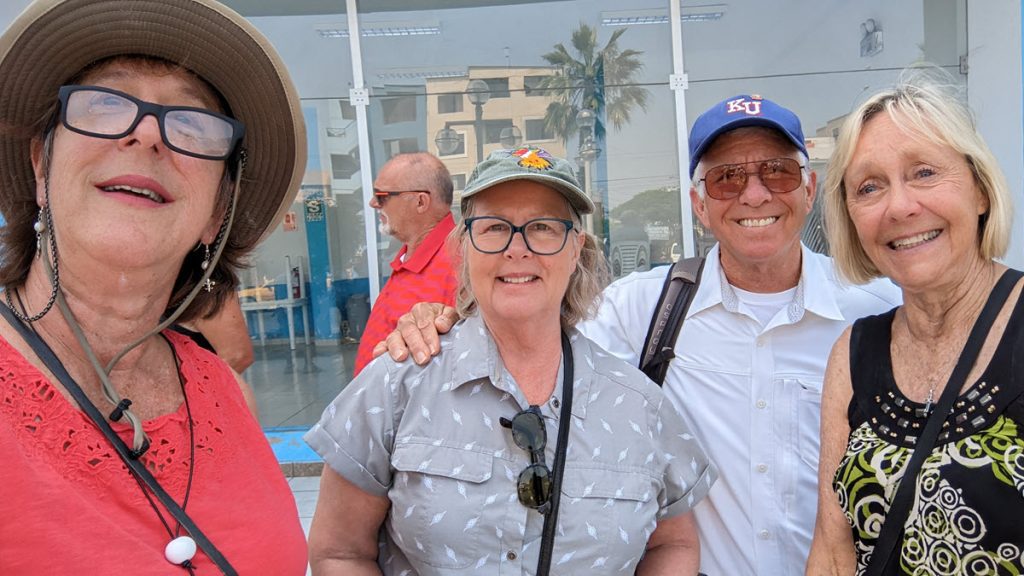
Our first stop was Huaca Pucllana, a pyramid built in the year 200 BC by the ancient Lima culture between 300 – 700 AD. Huaca is an adobe and clay pyramid located in the Miraflores district of central Lima, Peru, surrounded by cafes, restaurants and neighborhoods. We were surprised to find this archeological site right in the middle of the busy city. We didn’t go in to the site, just observed it from the street.
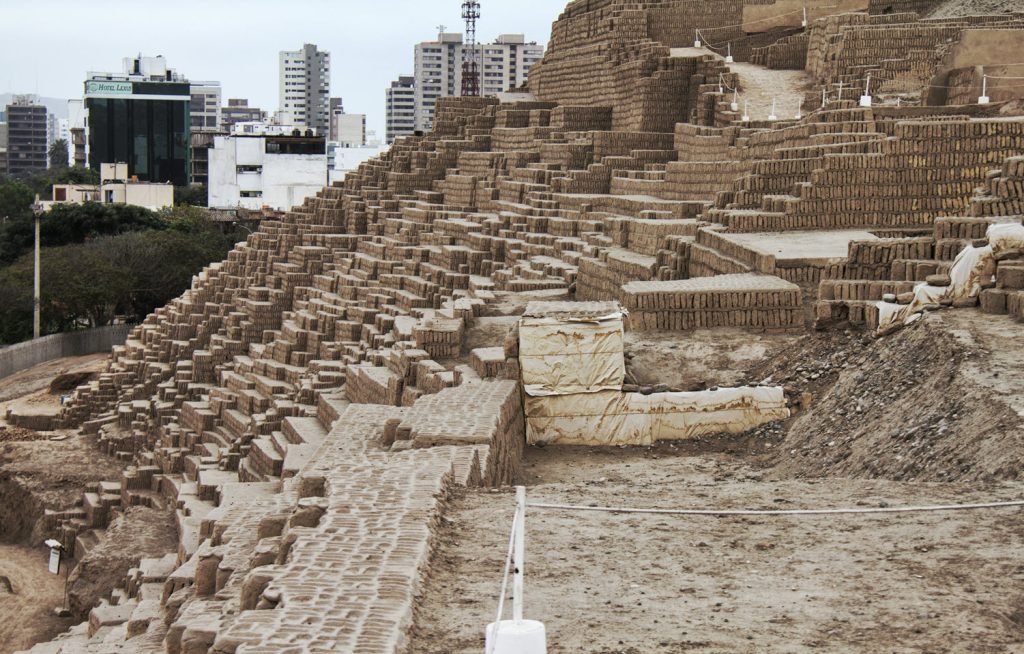
Our next stop was Parque del Amore, “The Park of Love”, in Miraflores. It is a beautiful park on the cliff overlooking the seaside. The name comes from a huge sculpture, El Beso or the Kiss. It is a beautifully maintained park with a Gaudi-like mosaic wall, many trees and flowers and spectacular views of the beach below. The park was built in 1993 and inaugurated on Valentines Day. Lines from various Peruvian poets are included within the mosaics found in Lima’s Parque del Amor. The most appropriate quote is “Tu estas por encima del infinito mar” which translates to “You are above the infinite sea” by Augusto Tamayo Vargas. The line is appropriate because of the panoramic views of the coastline and the Pacific Ocean from the park in it’s cliff-top location. On a clear day, you can see all along the coast of Lima and far out to sea — you can see surfers down below and boats on the horizon. We had a clear day for this tour, but Lima is often foggy or smoggy.
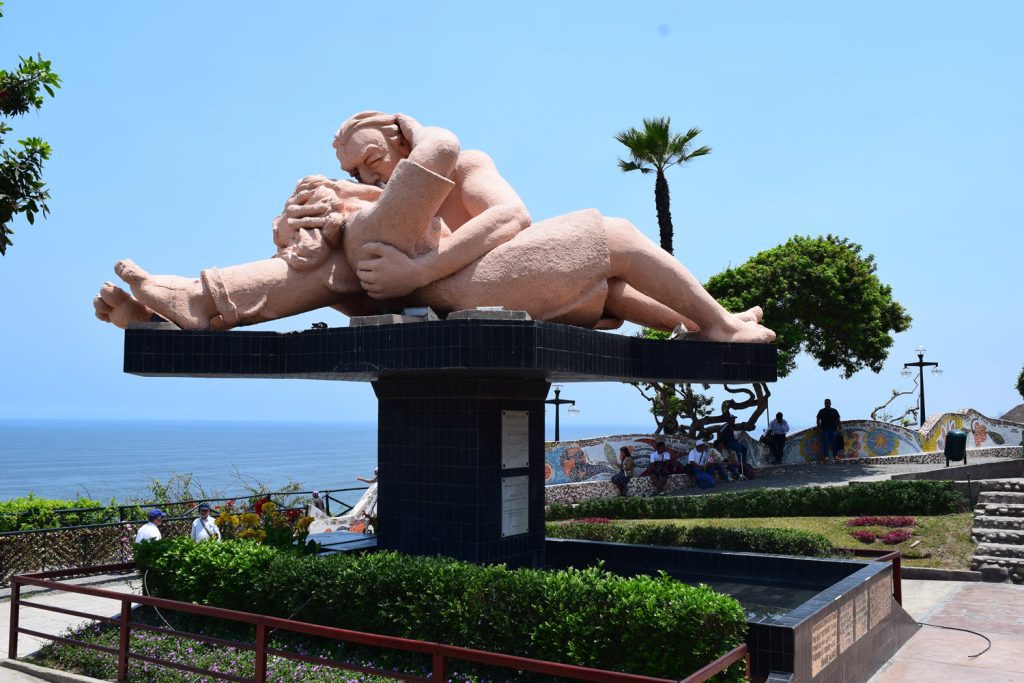
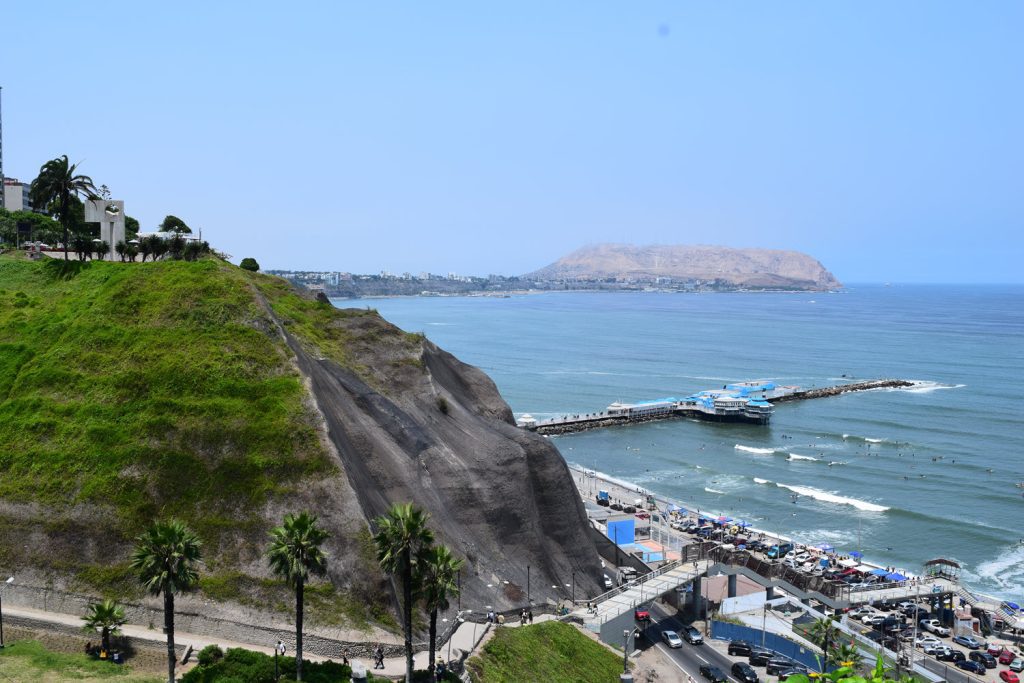
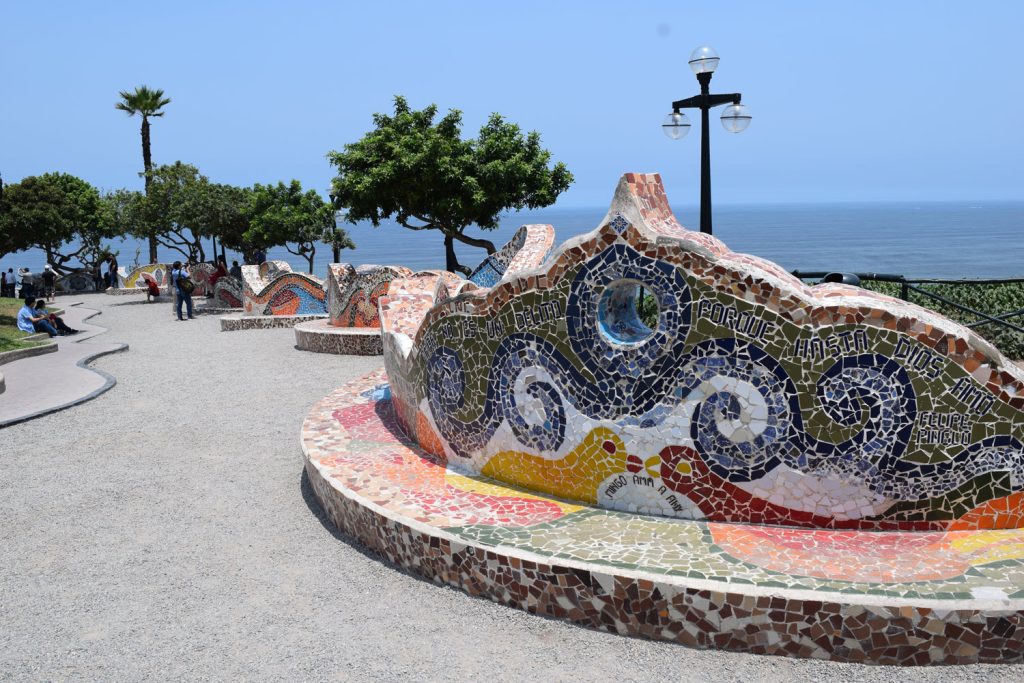
Barranco was the next destination. It is an artsy coastal neighborhood with restaurants, street art and a bohemian feel. Barranco was once the beach, pleasure and entertainment district for wealthier Limeños during the colonial and republican times). At the beginning of the 20th century, the barrio was home to famous Peruvian writers and artists which gave the district a unique character. The walls of the town are filled with excellent street art. Barranco’s landmark site is another testament to love – the Puente de Los Suspiros (Bridge of Sighs) is a wooden bridge inaugurated on Valentines Day in 1876. The bridge has survived wars and earthquakes. Young couples meet at this romantic place in Barranco. Tradition says that the one who makes a wish and then crosses the bridge for the first time without taking a breath will have his wish fulfilled. The great Peruvian female singer Chabuca Granda honored the ‘Puente de los Suspíros‘ by dedicating one of her songs to her.
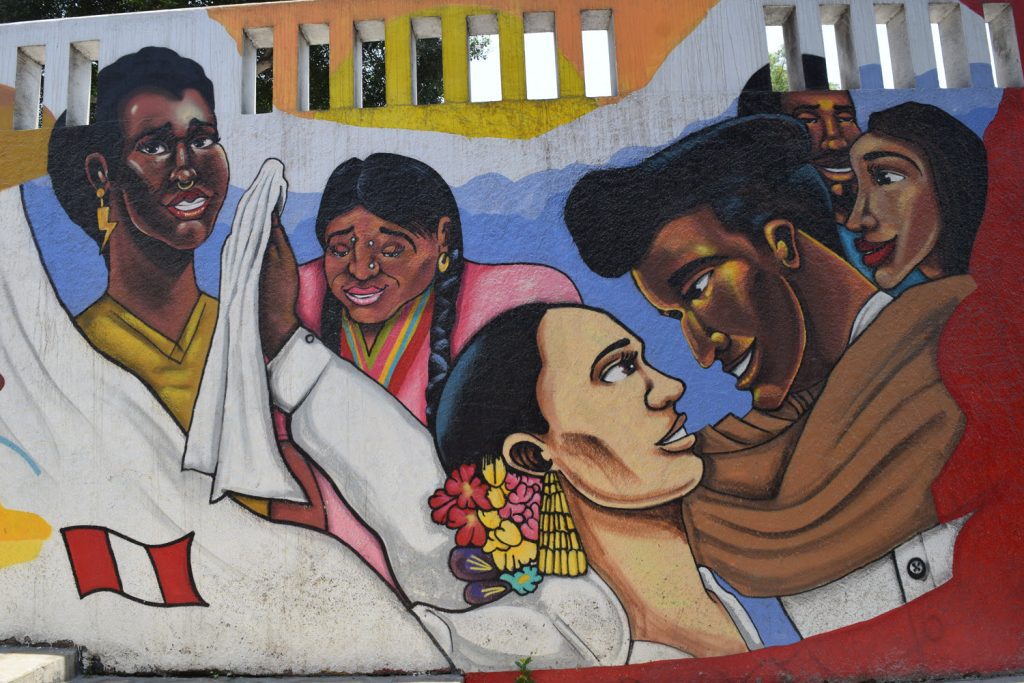
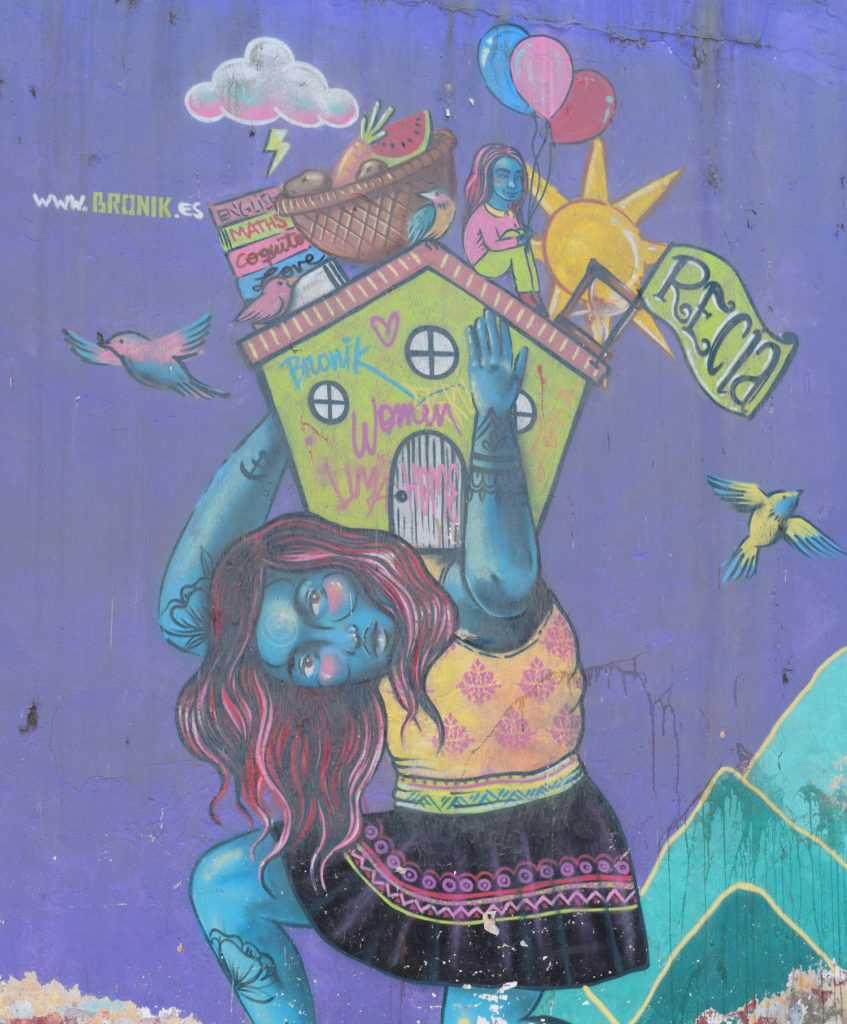
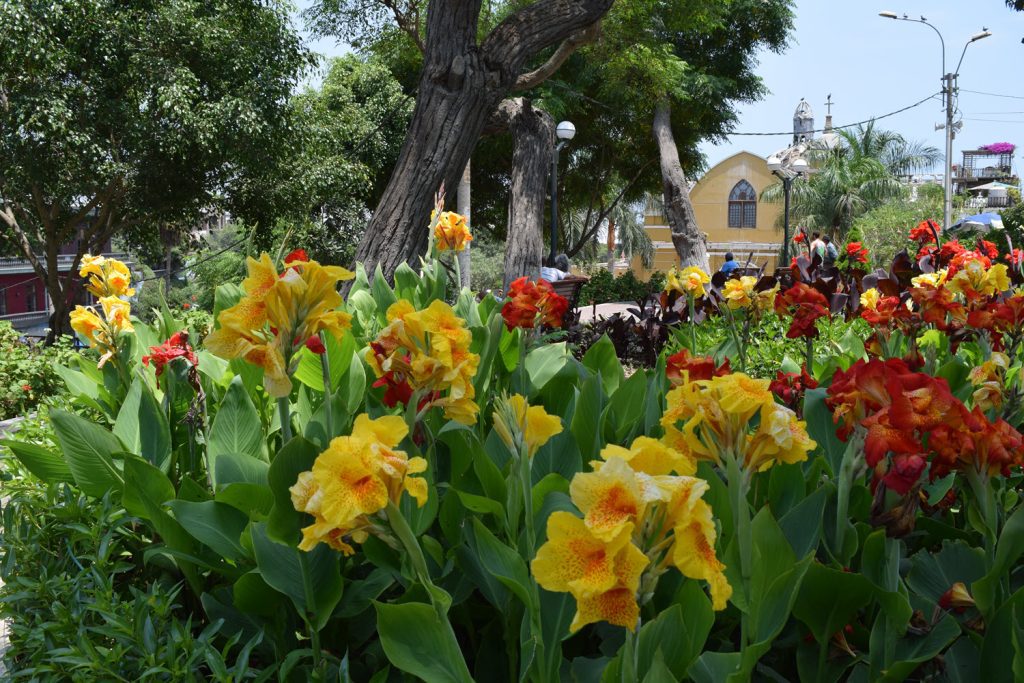
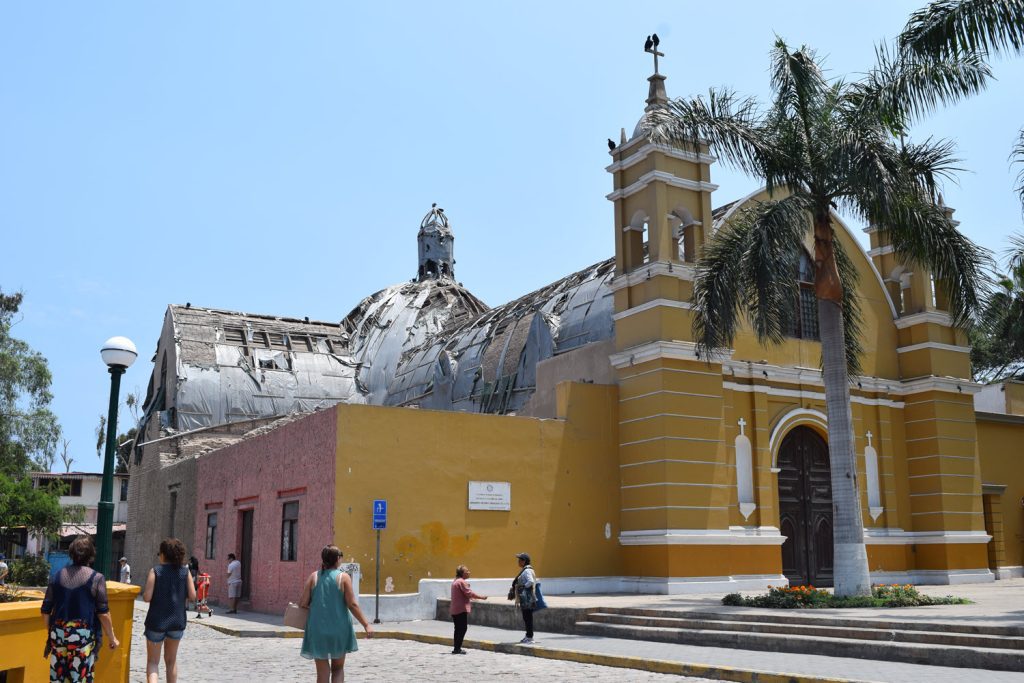
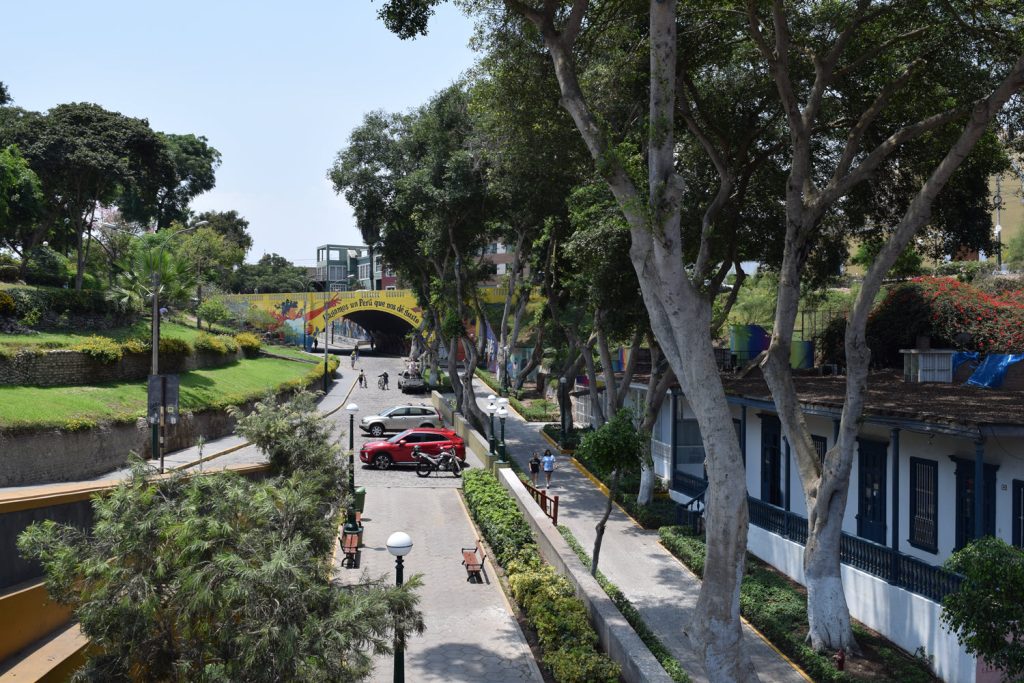
Our guide showed us some of the excellent street art, explaining the meaning behind the huge murals. We liked the feel of the Barranco district on our first tour and decided this is where we would stay on our return to Lima at the end of our week in Peru.
Our next stop was to the barrio of Chorrillos, which is a less touristy neighborhood next to Barranco. We drove up a very dry mountain lined with ramshackle buildings, literally shacks made of plywood and leftover building materials. At the top is the hill called El Morro Solar. From this vantage point is a stunning view of the Bay of Lima with a private beach resort just below. There is a huge cross that is illuminated at night that was built as a welcoming gift for the visiting Pope John Paul II. There is also a planetarium and observatory on this hill.
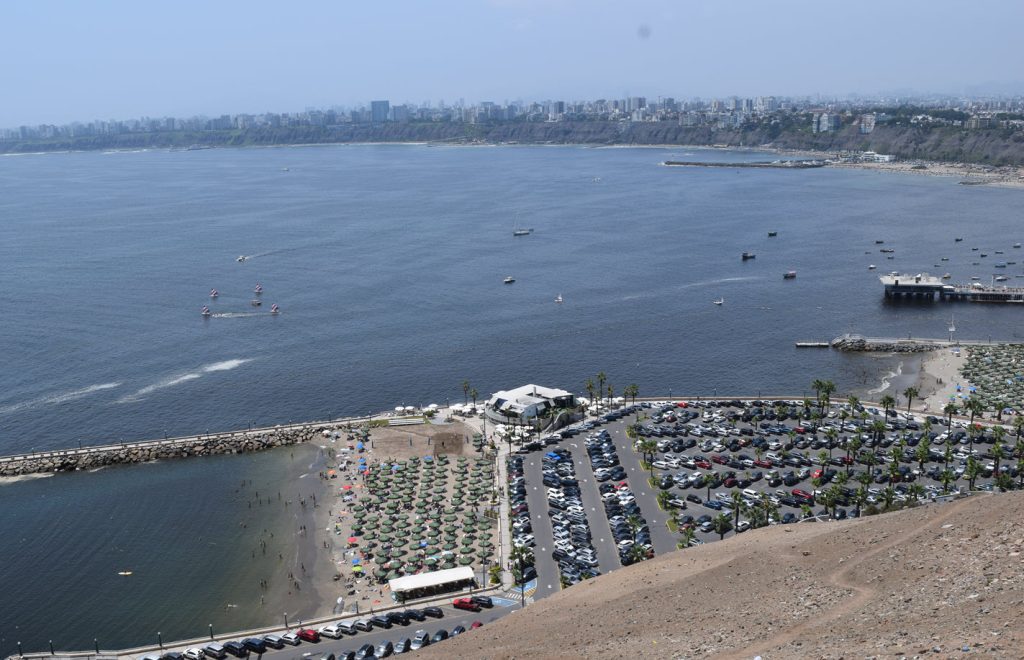
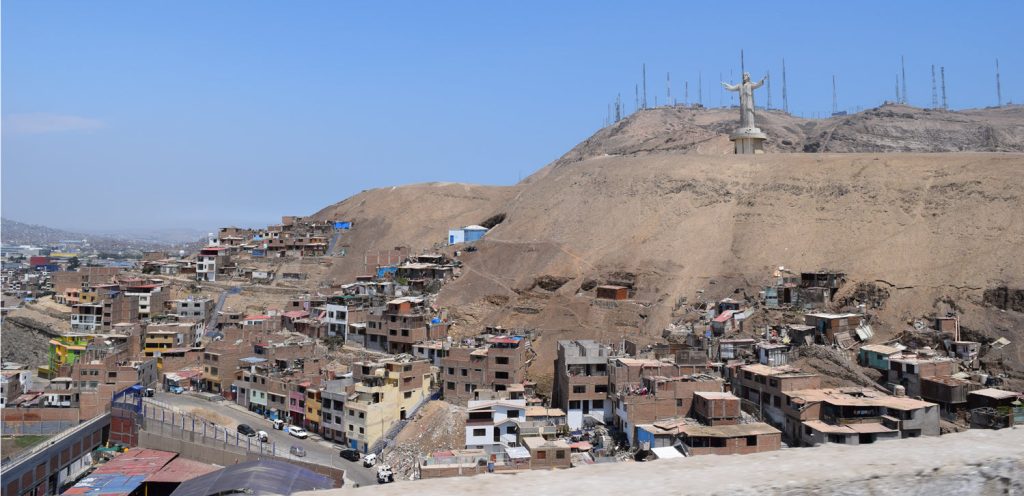
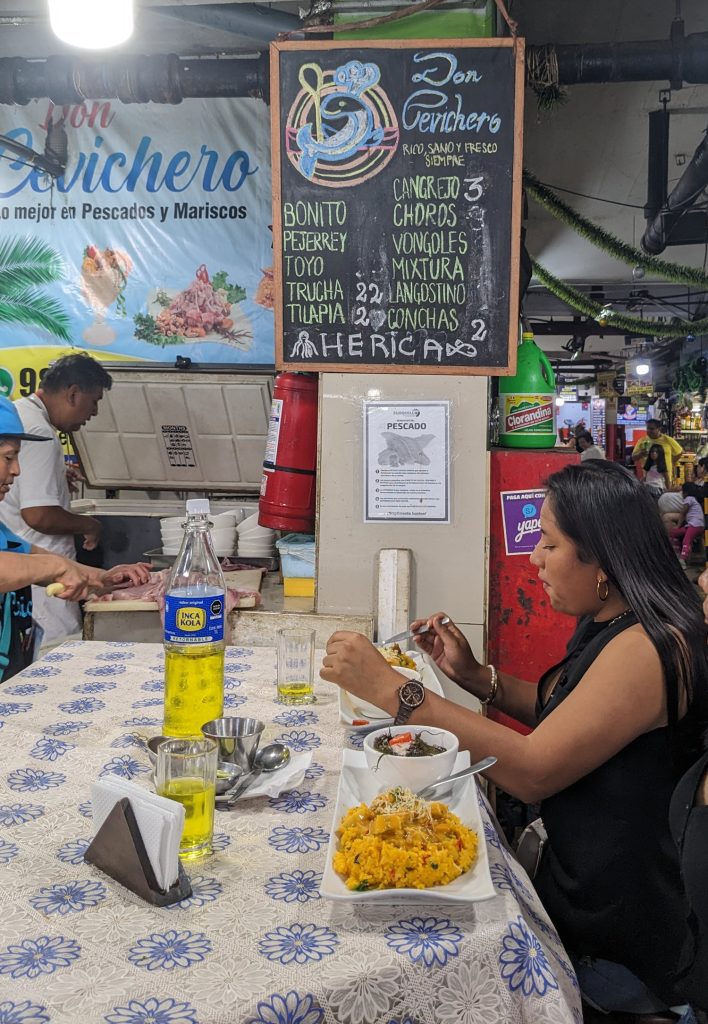
By now, we were ready for lunch. Our next stop was at the Mercado de Surquillo. Visiting markets and grocery stores when we travel is always a fun experience. Peru’s markets have a wide variety of fruits, vegetables and herbs from all over the country reflecting the rich biodiversity of the country. Our tour included lunch at Don Cervichero, a tiny restaurant in the middle of the busy market. It is a popular place to eat and we had to wait a while to get seats at the bar for all of us. Definitely worth the wait – we had ceviche, several rice and seafood dishes, fried fish, and chicha morando (a purple drinks made from corn). We forgot to take pictures of the plates as they arrived, so afterwards I took photos of other people’s food! The yellow Inca Kola pictured here is awful – tastes like cough syrup.
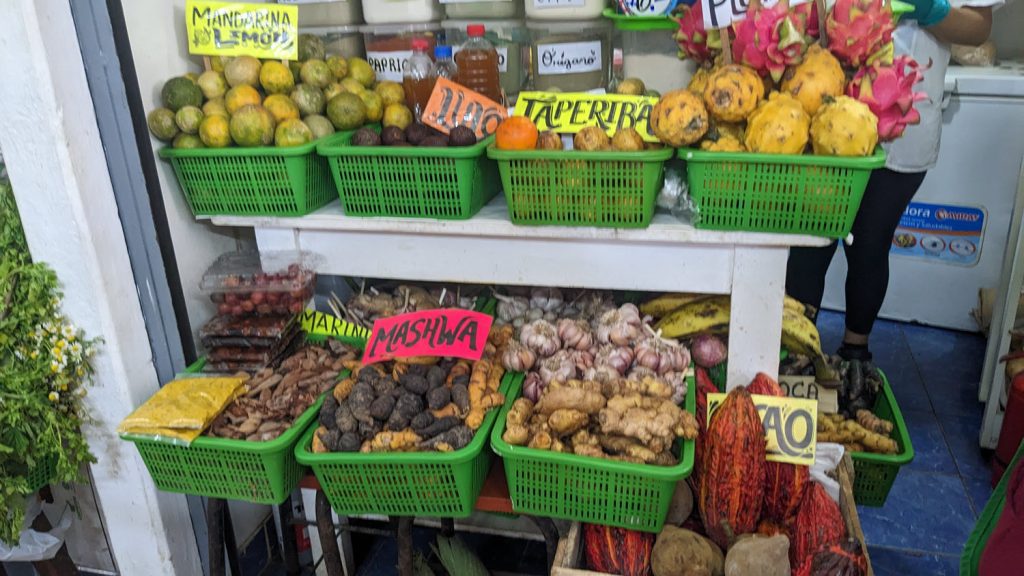
After lunch, we headed to the Historic Center of Lima for a walking tour and a visit to the mysterious catacombs below the San Francisco church. We started in the Plaza de Armes which is what most South American cities call their main square. In Spain they are called Plaza Mayor. The plaza was founded the same year that Francisco Pizarro founded the city of Lima in 1535 and is the focal point of the city. Some of the structures, such as the Government Palace, date back to the colonial times but many including the yellow buildings were built in modern times. In the center of the park is the Central Fountain, once home to the city’s gallows. The park and streets were filled with families enjoying the cool air in the late afternoon. We didn’t see many tourists as we roamed the city.
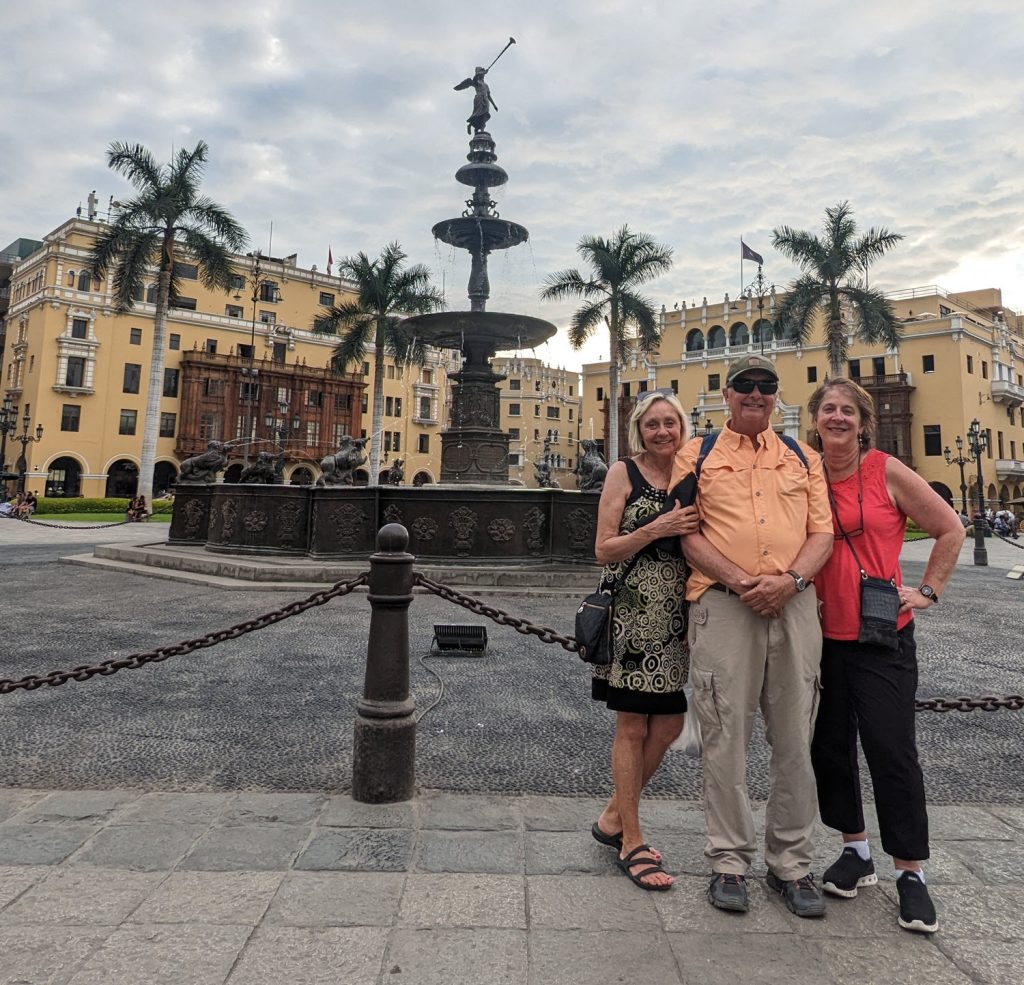
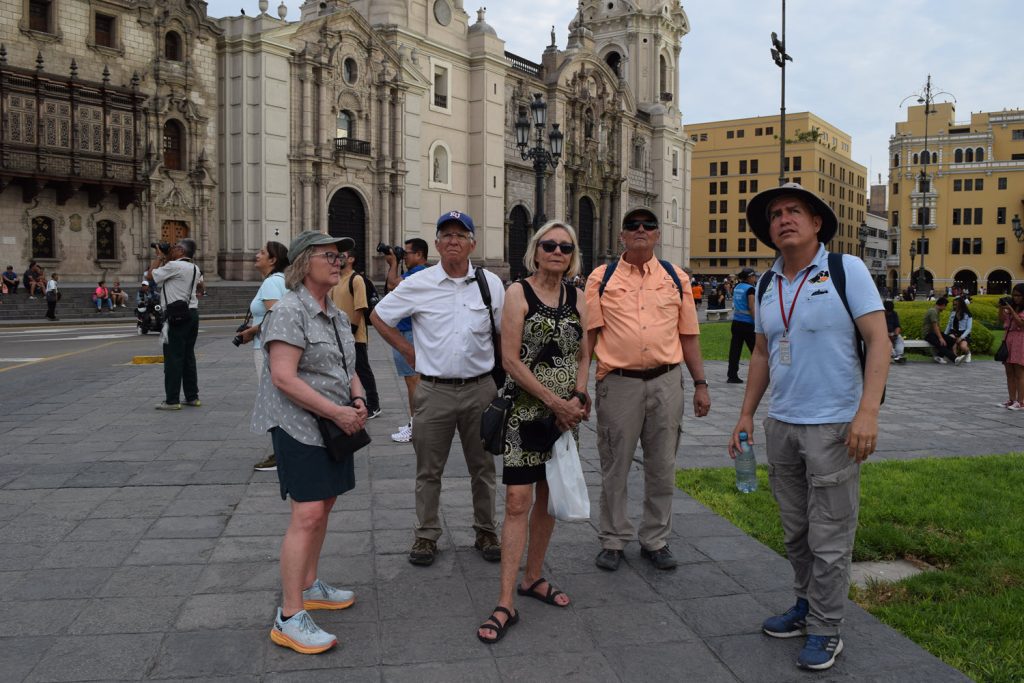
One of the many highlights of our Lima tour was the former San Francisco Monastery, now a museum in the middle of the city center. This church was reminiscent of the magnificent cathedrals we visited in Spain recently, particularly the ones in Seville. It is an oasis of calm in the midst of the hustle and bustle of the city. Manuel did a great job of explaining the architecture and works of religious art. He had once worked as guide in the church. We loved the monastery’s library with its massive religious texts. Under the monastery is a network of tunnels possibly connected to other places in the city. There are over 25000 people buried in these catacombs during colonial times – mostly famous people who paid their indulgences to the church. Since XXX only monks were allowed to be buried in these tombs. There were plenty of bones and skulls all visible to the visitors.
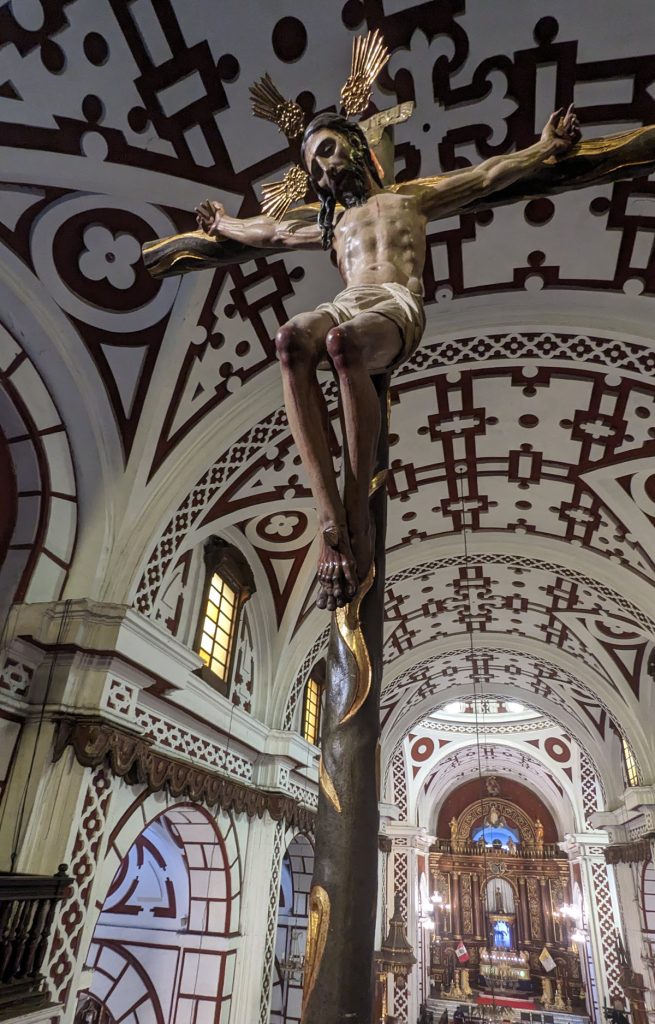
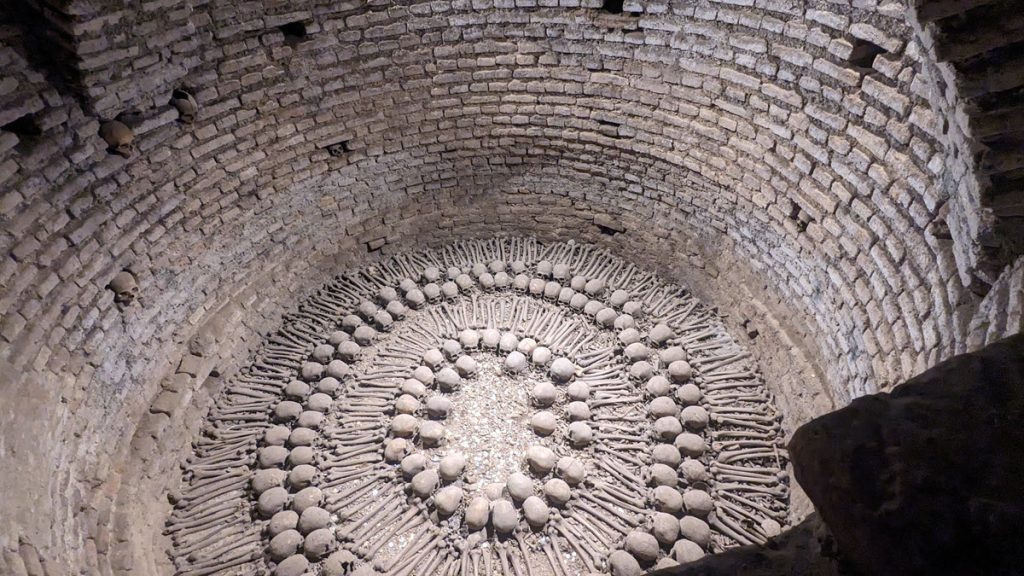
By now it was getting towards 6pm and I was done. My legs were aching and I was ready to get back on the boat which was docked for the night in Lima’s port town of Callao. Craig was getting a little worried about us when we flew in at 6:45, just in time to meet some friends for one last dinner at the Terrace Café. The next morning we disembarked around nine am, spent a few hours at the airport hotel with Brenda and Craig and then met Chris and Jennie at the Lima airport for our next adventure – Cusco and Machu Picchu.
Return to Lima & Barranco (March 25, 26)
After our 5 days in Cusco and Machu Pichu we flew back to Lima for a last look at Peru’s capital city. We found a great little boutique hotel in Barranco, Casa Republica, which had been recommended by our tour guide the previous weekend. The hotel is walking distance to the sea as well as the town’s entertainment district. Chris and Ben flew home on Friday night and it was Bill, myself and Jennie. We took up the hotel’s offer of a “free” drink on their rooftop bar and had a round of pisco sours and then another. Wooh, the first one was strong and the next day we all swore off any more pisco sours in Peru.
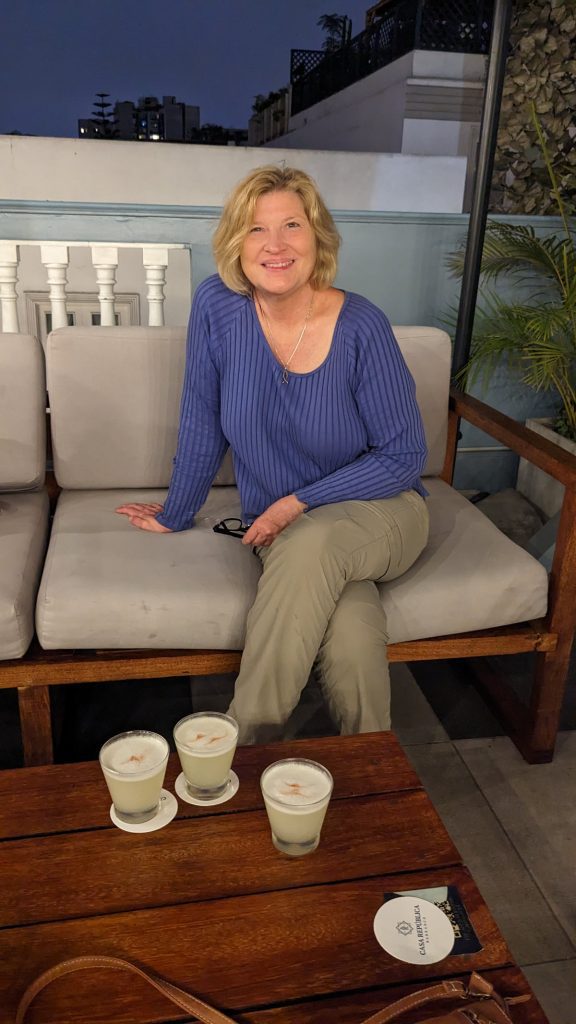
We had some time the next day to explore the area and went to the Museo Larco in Miraflores. Uber shared rides are inexpensive and reliable way to get around Lima. I love that the best way to get across this huge city is to drive along the seaside road, El Malecon. The city is built up on cliffs with a highway and then beaches, riding/walking paths, many parks and some swimming clubs between the city and the water. On our last morning, Bill and I borrowed some bikes from the hotel and road along the bike paths from Barranco to edge of Miraflores. The city faces west so in the summer there are beautiful sunsets over the Pacific Ocean.
The Larco museum was amazing. It is a privately owned museum of pre-Columbian art housed in an 18th-century vice-royal building. It showcases chronological galleries that provide a thorough overview of 5,000 years of Peruvian pre-Columbian history. It is also known for its gallery of pre-Columbian erotic pottery. The facility was beautiful and the exhibits as well. They had explanations in several languages but the lighting was so low that some of the explanations were hard to read for this middle aged woman. These treasures were accumulated by Rafael Larco Hoyle in the first quarter of the twentieth century. The erotic gallery was interesting. From the museum’s website, “The eroticism present in this major pottery collection evokes desire, attraction and the coming together of the opposing yet complementary forces that enable life to endlessly regenerate.”. The museum has an excellent restaurant in a garden setting where we enjoyed a simple lunch before our next adventure for the day.
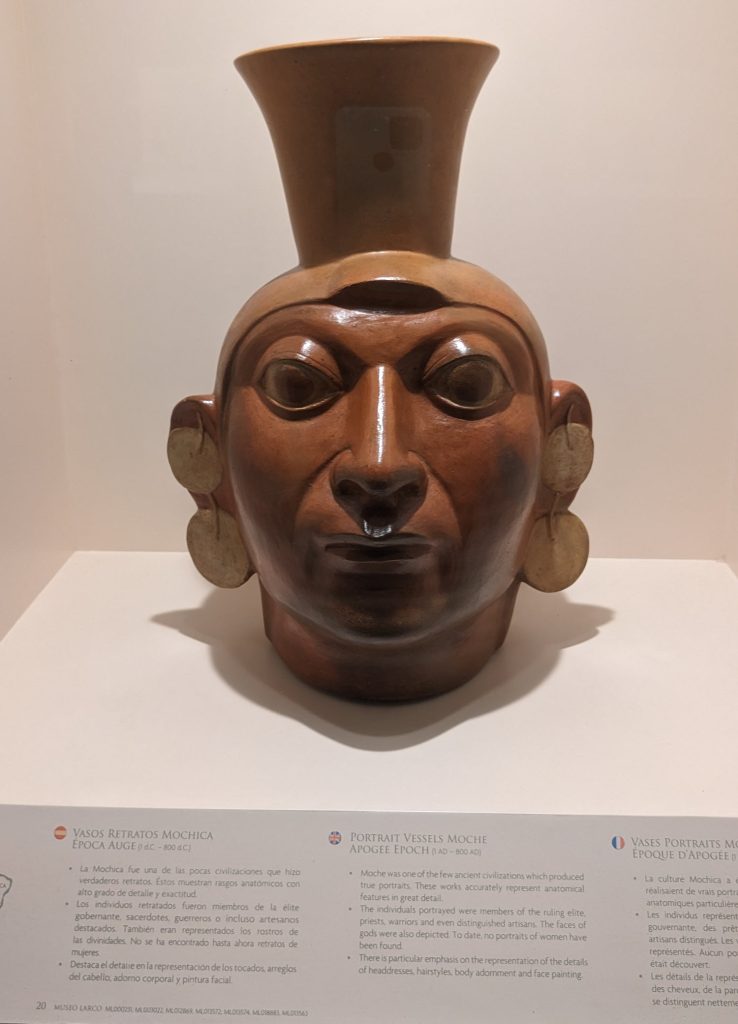
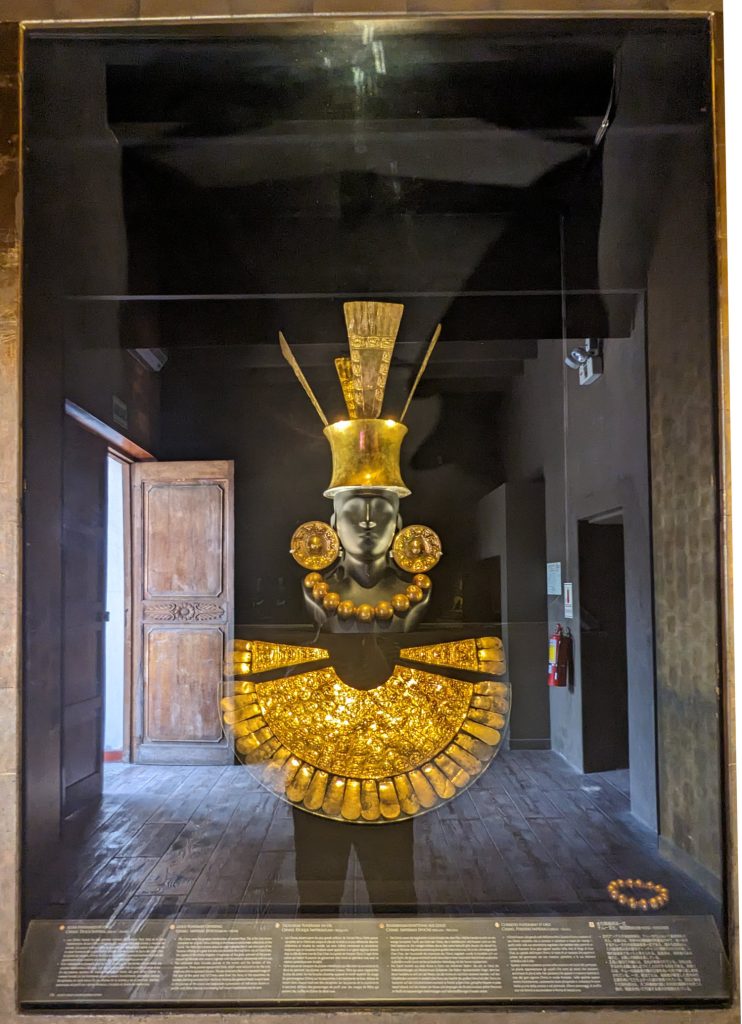
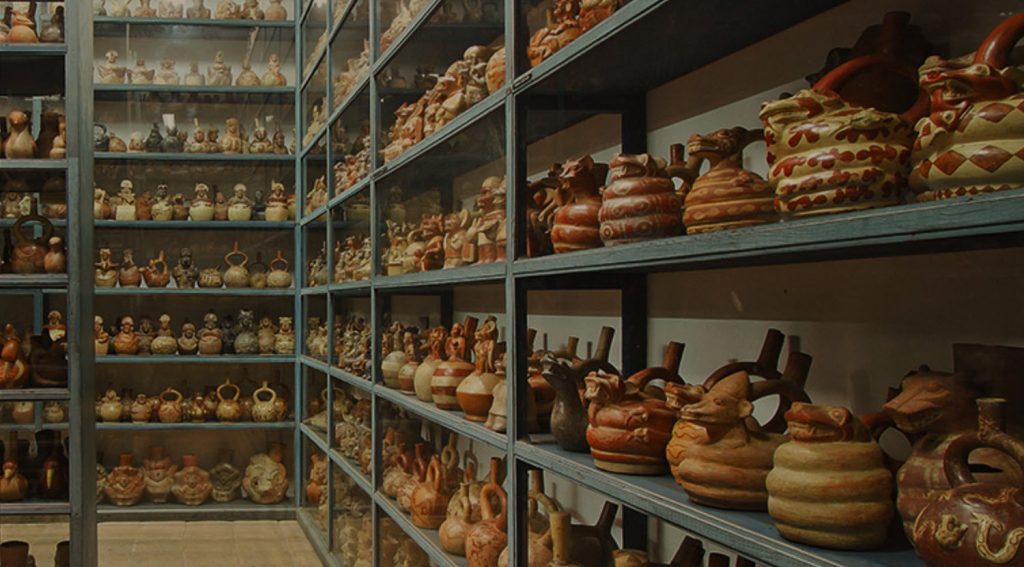
We had scheduled a late afternoon foodie tour of Barranco via tripadvisor. The tour is called “5 Iconic Restaurants of Lima (in Barranco”. We specifically chose this tour because of the location. Our guide was Alejandro, an immigrant to South America from Cuba, the same age as our grown kids. He was passionate about the town and the food we were going to try. We only made it to three restaurants because we got sidetracked in a few art galleries. We enjoyed the food, sharing just one portion at each restaurant – seafood, parilla and roasted chicken which was my favorite. Alejandro’s viewpoint on world politics and life in a communist country was enlightening and sad for the lost opportunities for the young people still living in Cuba.
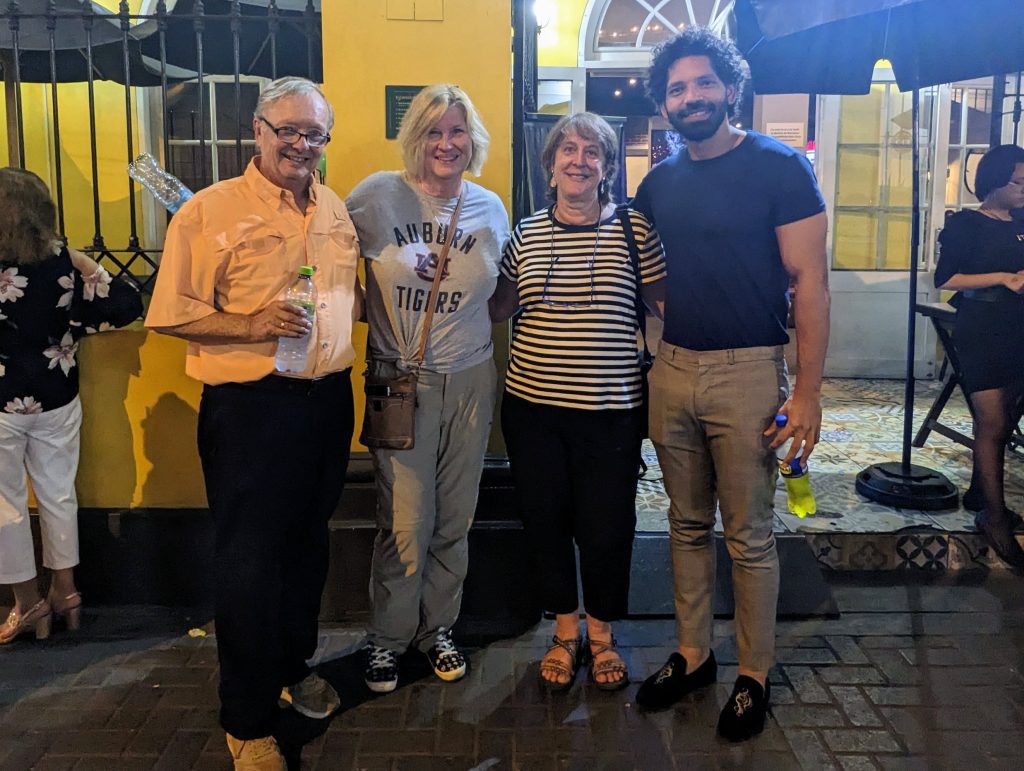
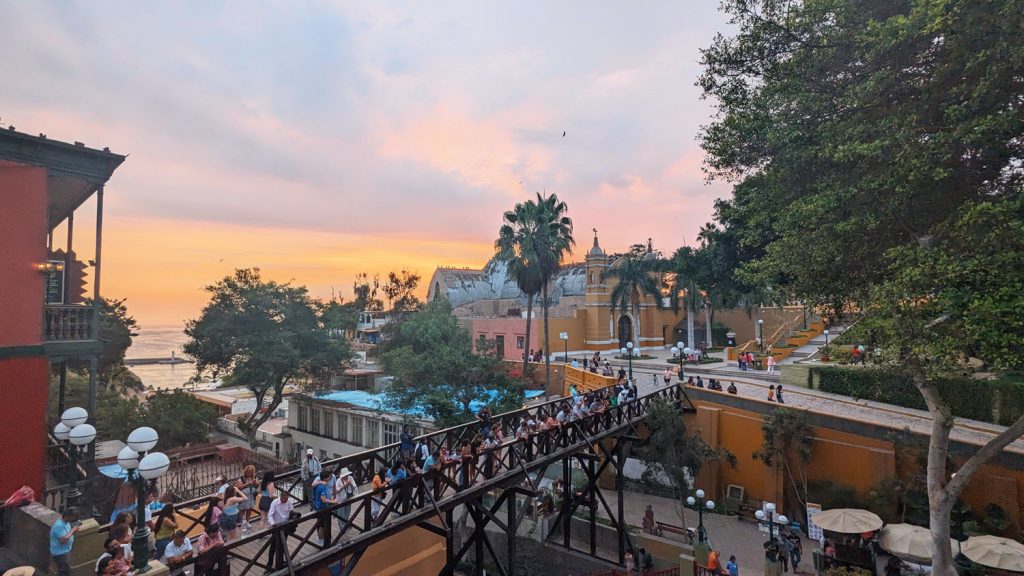
Bill and I had one more day to explore Barranco on Sunday. We borrowed bikes from the hotel and rode along the El Malacon, a road high on the cliff overlooking the sea with dedicated bike lanes. We visited the Jade Rivera museu. Jade is an internationally known artist who started his career painting murals in Peru. We visited his museum adjacent to our hotel and photographed some of his murals in Barranco. We hiked way down from the town to the seaside just to put our feet in the Pacific Ocean. It is a very rocky beach and we should have brought water shoes to better enjoy a beach walk. And then it was a long hot haul coming back up.
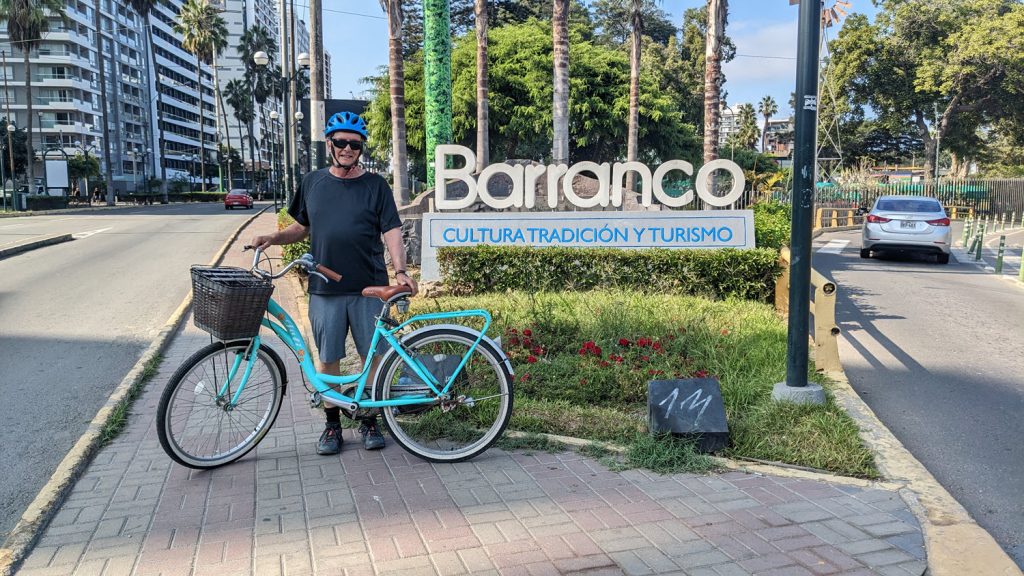
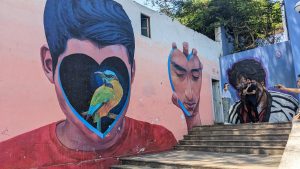
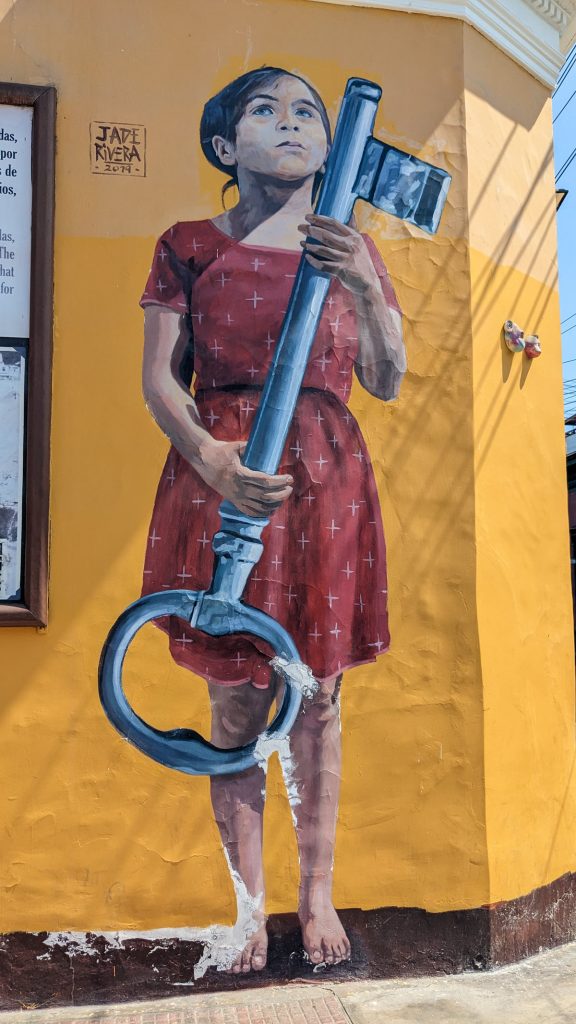
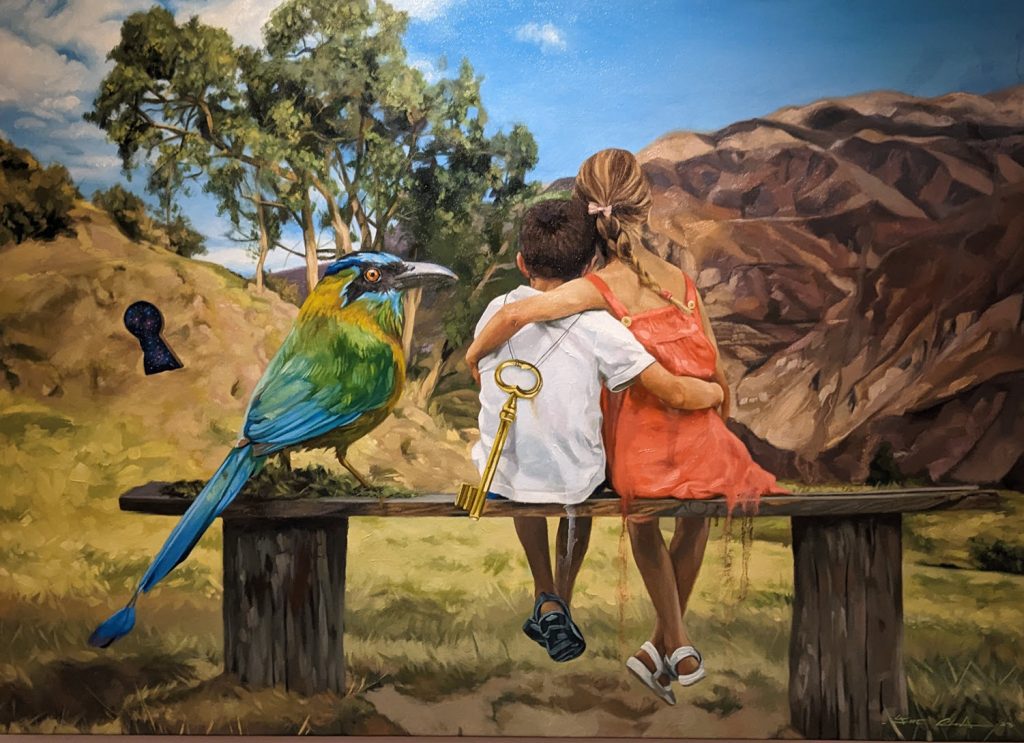
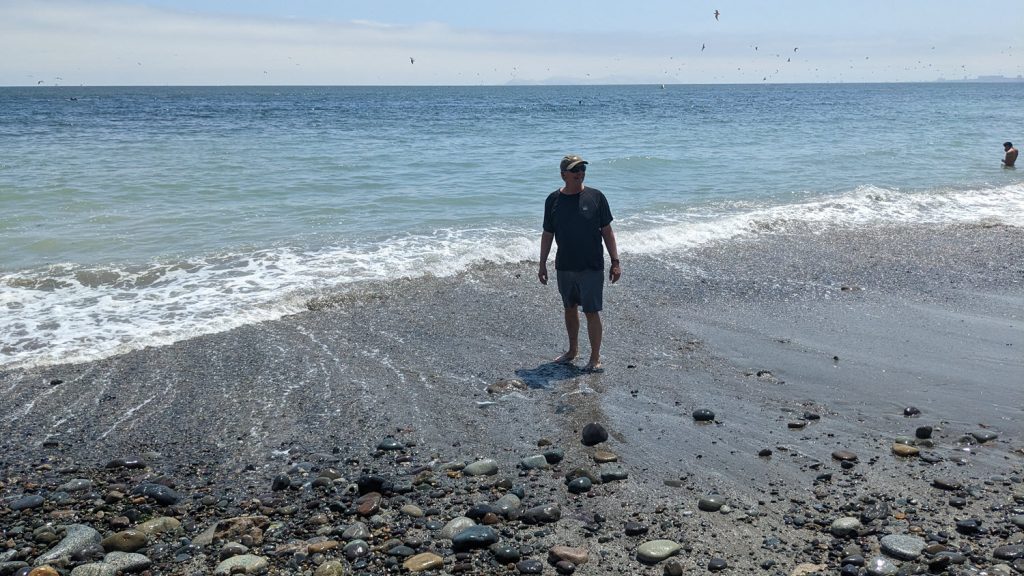
There is a strong police presence throughout the places we visited in Peru. We never felt unsafe. Lima is a huge city with 11 million people living here. Much of the city is noisy and grimy but as tourists we saw many of the highlights. There are more archeological sites as well as museums and galleries that we missed on this quick trip. Today is our last day in Peru as we are leaving on a midnight flight back to the US. Our 5 weeks in South America have been fun and educational. Far and away, the Sacred Valley tour and our visit to Machu Pichu were the highlights of our trip.
